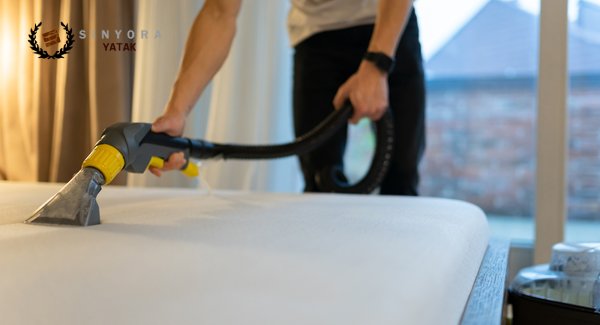A mattress is more than just a place to sleep; it’s an investment in your well-being. With the proper care, you can extend its lifespan and maintain optimal comfort and support for many restful nights ahead.
Whether you have a premium memory foam mattress, a high-end hybrid mattress, or a budget-friendly innerspring model, proper maintenance can preserve its structure, reduce wear and tear, and keep it feeling “like new” far beyond the average five- to eight-year window.
In this article, we’ll share practical tips to make your mattress last longer.
Table of Contents
Understanding Mattress Lifespan
Average Lifespan of a Mattress
The average lifespan of a mattress is 7 to 10 years. However, this can vary significantly based on several factors, including the mattress type, the quality of the materials, and how well the mattress is maintained.
For instance, a high-quality, durable mattress can provide comfort and support for extended periods. In contrast, a neglected or lower-quality mattress may need to be replaced much sooner.
Regular maintenance practices, such as using a mattress protector and rotating the mattress regularly, can also play a crucial role in extending its lifespan.
Factors Influencing Mattress Lifespan
Several factors can influence the lifespan of a mattress, including:
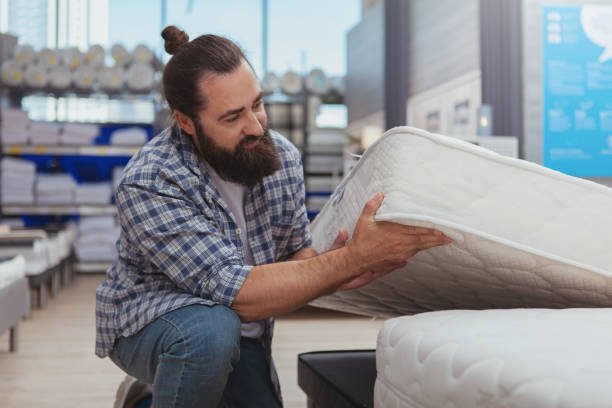
Mattress Type: Different mattress types have varying lifespans. Latex mattresses are known for their durability and can last up to 20 years, while innerspring mattresses may need to be replaced every 7 to 10 years. Memory foam and hybrid mattresses also have their lifespan ranges, often falling somewhere in between.
Quality of Materials: The quality of the mattress’s materials can significantly impact its lifespan. High-density foams, latex, and other durable materials last longer than low-density and lower-quality ones. Investing in a quality mattress made from premium materials can pay off in the long run.
Body Weight: Heavier sleepers may need to replace their mattresses more frequently, as their added weight can cause them to wear out faster. This is especially true for foam and innerspring mattresses, which may develop indentations or sagging over time.
Sleep Quality: Poor sleep quality can indicate that the mattress no longer provides adequate support and comfort. If you consistently wake up feeling sore or unrested, it may be time to consider a new mattress.
Maintenance Practices: Regular rotation, cleaning, and using a mattress protector can help extend a mattress’s lifespan. These practices help distribute wear evenly and protect the mattress from spills, stains, and allergens.
By understanding these factors, you can take proactive steps to extend the lifespan of your mattress and ensure a comfortable and supportive sleeping surface for years to come.
Use a Quality Mattress Protector
Why a Protector Matters
A mattress protector forms the first line of defense against spills, stains, sweat, and allergens, significantly impacting a mattress’s lifespan.
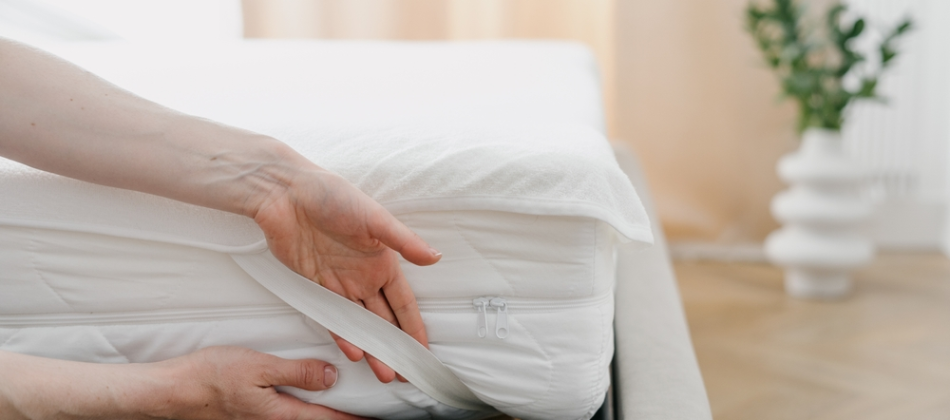
By shielding the surface from daily wear, you’ll reduce the risk of liquid damage and bacterial buildup.
Types of Protectors
- Waterproof Protectors are essential for households with children or pets. They effectively stop spills from seeping into the mattress.
- Hypoallergenic Protectors: Helps deter dust mites, which thrive in warm, humid environments.
- Breathable Fabrics: Look for materials like cotton or bamboo that allow air circulation and prevent overheating. The quality of these mattress materials also significantly impacts the lifespan and overall comfort of the mattress, ensuring it provides sufficient support and enhances sleep quality.
Rotate (or Flip) Your Mattress Regularly
Rotating vs. Flipping
Rotate: Move the head of the mattress to the foot of the bed (and vice versa).
Flip: Turn the mattress so that the top surface becomes the bottom. (Not all mattresses are double-sided; check the manufacturer’s guidelines first.)
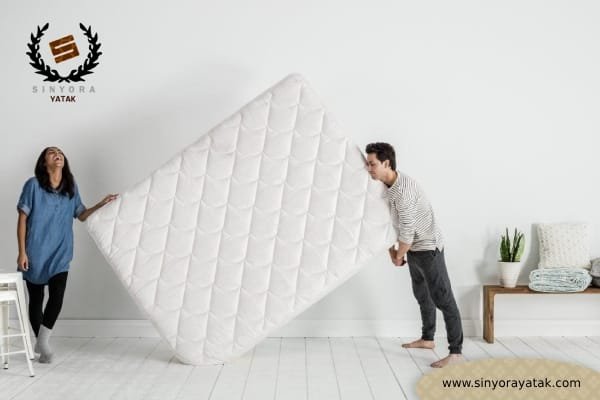
Frequency
Every 3–6 Months: This is a common recommendation for most mattresses, but follow the brand’s specific instructions. Rotating or flipping helps distribute weight more evenly, preventing sagging or indentation in one spot.
Provide Adequate Support
A Sturdy Bed Frame or Base
A high-quality bed frame or foundation is crucial. Inadequate support can accelerate mattress wear, especially in the center. Please look at your slats or box springs periodically for signs of bending or weakness.
Check Manufacturer Recommendations
Some mattresses, such as memory foam or latex models, require solid or closely spaced slats. If the gap between slats is too wide, your mattress may sag prematurely.
Keep Your Mattress Clean and Fresh
Vacuum Regularly
Even with a protector, dust, dead skin cells, and allergens can settle on top of or within the surface of the mattress. Use your vacuum’s upholstery attachment every couple of months to remove debris.
Spot Clean Stains
If spills do occur:
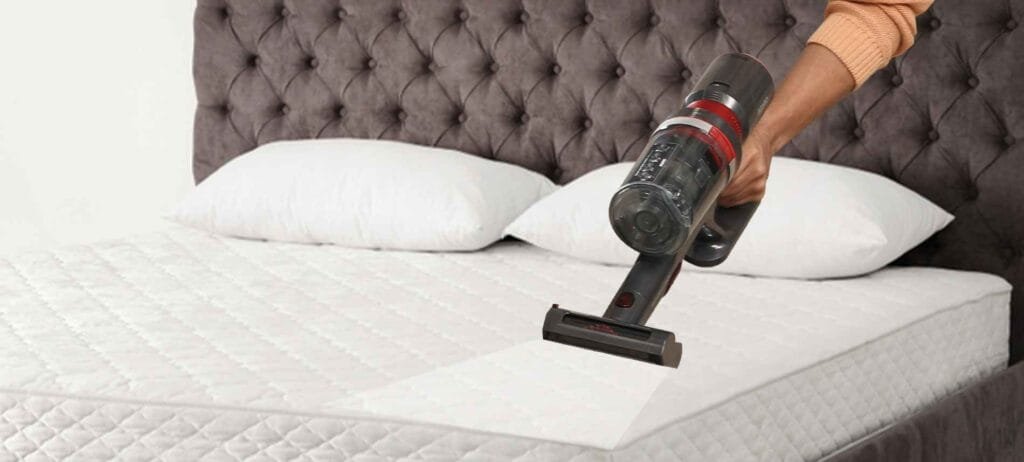
- Blot the Area: Absorb as much liquid as possible with a clean, dry cloth.
- Mild Cleaning Solution: Use a small amount of mild detergent mixed with water to gently clean the stain.
- Avoid Oversaturating: Excess moisture can lead to mold or mildew growth.
Air It Out
To ventilate, you can slowly leave your mattress uncovered (without sheets or protectors) for a few hours. This helps evaporate any residual moisture and keeps it smelling fresh.
Avoid Excessive Weight and Rough Treatment
Limit Jumping
It may be fun for kids (or pets) to jump on the bed, but it exerts uneven stress on the springs or foam, leading to premature sagging.
Don’t Overload the Bed
Storing heavy items under the bed for mattresses on slatted frames can reduce airflow and potentially stress the slats or box spring. Keep the space clutter-free to maintain structural integrity.
Control Bedroom Environment
Optimize Temperature and Humidity
Excess humidity can lead to mold growth and weaken materials. Use a dehumidifier or air conditioner to maintain a comfortable humidity (around 30–50%).
Proper Ventilation
Open windows regularly to allow fresh air to circulate. Good airflow can help regulate temperature, reducing the chance of moisture buildup in your mattress.
Contact us today and get the best offer!
Know When It’s Time to Replace: Factors Influencing Mattress Lifespan
Key Indicators
- Persistent Sagging: Indentations deeper than 1–1.5 inches often compromise support.
- Morning Aches and Pains: If you consistently wake up sore, it may be time for an upgrade.
- Allergies or Asthma: A well-maintained mattress can accumulate allergens and dust mites over time.
Take Advantage of Warranties
Most mattress warranties range from 5 to 10 years. Familiarize yourself with the terms—some warranties cover certain types of sagging or manufacturing defects. Keep your receipts and documents in a safe place.
Conclusion
A little preventive care can extend the life of your mattress. Using a protector, rotating or flipping it regularly, maintaining proper support, and keeping the surface clean will protect your investment and allow you to enjoy more restful, comfortable sleep.
Proper mattress maintenance also contributes to achieving quality sleep, enhancing your overall health and well-being.
At Sinyora Yatak, we believe in delivering the perfect sleep experience. From durable, high-quality mattresses to protective accessories that shield against everyday wear, our products are designed to help you get the most out of your mattress. Contact us or visit our showroom to learn more about our sleep solutions and expert maintenance tips.
Read more: How Long Does a Mattress Last? Signs You Need a New One
Frequently Asked Questions (FAQ) About Mattress Longevity
How long does a mattress typically last?
The average lifespan of a mattress ranges from 7 to 10 years, depending on the type, quality of materials, and maintenance practices. Latex mattresses can last up to 20 years, while innerspring mattresses may need to be replaced every 7 to 10 years.
What factors influence mattress lifespan?
Several factors contribute to a mattress’s lifespan, including the type, quality of materials, body weight, and maintenance practices. Proper care, such as using a mattress protector and rotating the mattress regularly, can extend its life.
How can I extend the lifespan of my mattress?
To extend your mattress’s lifespan, use a quality mattress protector, rotate or flip the mattress regularly, provide adequate support with a sturdy bed frame, and vacuum and spot clean stains.
When should I replace my mattress?
Consider replacing your mattress if you notice persistent sagging, morning aches and pains, or increased allergy symptoms. These signs indicate that the mattress may no longer provide adequate support and comfort.
Can a mattress last 20 years?
Yes, with proper care and maintenance, mattresses made from high-quality latex can last up to 20 years. These durable materials offer exceptional longevity, making them a wise investment for those seeking a long-lasting sleep solution. By using a mattress protector and following regular maintenance practices, you can maximize the lifespan of your latex
How do I know if my mattress is worn out?
Signs of a worn-out mattress include sagging, lumps, increased noise, and discomfort, leading to poor sleep quality. If you experience these issues, investing in a new mattress may be time. Additionally, waking up with aches and pains or noticing that your mattress no longer provides adequate support are clear indicators of wear. Over time, a mattress can accumulate allergens and dust mites, exacerbating allergy symptoms and impacting sleep health.
What is the best way to clean a mattress?
Use a vacuum with an upholstery attachment to remove dust and allergens regularly. Spot clean stains with a mild detergent and water, and avoid oversaturating the mattress to prevent mold or mildew. Consider using a baking soda paste or a specialized upholstery cleaner for tougher stains. Regular cleaning maintains the mattress’s appearance and contributes to a healthier sleep environment.
How often should I rotate or flip my mattress?
Rotate or flip your mattress every 3–6 months to distribute wear evenly and prevent sagging. This regular adjustment helps maintain the mattress’s shape and comfort. Always check the manufacturer’s guidelines; not all mattresses are designed to be flipped, and improper handling can void warranties or cause damage.
Do mattress protectors help?
Yes, mattress protectors are essential for preventing spills, stains, and allergens from damaging the mattress, significantly extending its lifespan, and maintaining hygiene. Creating a barrier against dust mites and other irritants also helps reduce allergy symptoms. Investing in a quality protector preserves the mattress and enhances sleep health, ensuring a cleaner and more comfortable sleeping environment.

